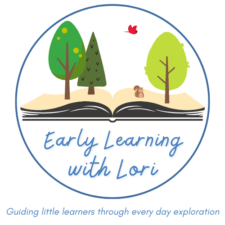Easy Paper Folding Activities to Boost Preschool Learning
Want to boost preschool learning with simple activities? Paper folding is a great place to start! When children try easy paper folding activities, they make their hands stronger while learning about shapes and solving problems. Best of all, you only need paper to begin – something you already have at home or in your classroom.
Why Paper Folding Matters for Preschoolers
Studies show that even young children (as young as 2½) can learn from folding paper. Read more: Knowing How to Fold ’em: Paper Folding across Early Childhood. Paper folding helps kids learn in many ways:
- Hand Strength: Folding paper makes hand muscles stronger, which helps kids hold pencils and use scissors better.
- Understanding Shapes: Kids see how shapes change when they fold paper. A square can become a triangle – that’s early math in action!
- Using Both Hands: Folding helps kids use both hands together, which they need for tasks like zipping jackets, tying shoes, and holding down a piece of paper and drawing on it.
- Learning to Focus: Folding takes practice and careful work. This helps kids learn to follow steps and pay attention.
Now that we see that there are all these benefits from folding, let’s explore some simple activities to get started with your little ones.
Easy Paper Folding Activities for Preschool
Ready to start folding? Here are some fun activities perfect for little hands. At first, you can pre-fold the paper to give kids guidelines to follow. As they get better, they can try folding on their own.
Greeting Cards
Show kids how to fold paper in half to make cards. Then let them add stickers and drawings.

Snowflakes
Fold paper into quarters, cut shapes on the edges, then open to see a pretty snowflake.

Envelopes
Take a square piece of paper and fold the corners to the middle to make an envelope.


Paper Grids
Fold paper several times and open it to make a grid. Then try these fun ideas:
- Put stickers in the spaces
- Color patterns
- Refold along a line to make new shapes.
- Use fingerpaint to trace the fold lines.




Want more folding activities? Download our a sample of our No Prep Paper Folding Crafts when you join our email community. For a large set of one-fold paper crafts check out our No Prep Fine Motor Crafts: 20 Printable Folding Activities in our Teachers Pay Teachers store – perfect for year-round folding practice for your classroom or home.
While these basic activities build essential skills, they also create a perfect foundation for introducing early STEM concepts. Next, let’s see how paper folding naturally connects to science, technology, engineering, and math.
How Paper Folding Teaches STEM Skills
Paper folding helps kids learn about science, technology, engineering, and math in a fun way. Try these activities:
Science Fun
Make a paper tent and see how it stands. Add more folds to see what happens. STEM Connection: Understanding cause and effect.

Tool Skills
Use safety scissors to cut along folds and make new shapes. STEM Connections: Using tools. Identifying how shapes change.

Engineering Skills
Make a paper bridge by folding it like an accordion. Test it with small toys. STEM Connection: Discovering how folds add strength and support design principles

Math Discovery
Fold and unfold paper to discover new shapes and symmetry. Fold paper into halves and quarters to count sections. STEM Connection: Shapes and fractions

These STEM activities are just the beginning. To help children practice their folding skills throughout the day, let’s look at some everyday items they can fold beyond paper.
More Ways to Practice Folding
Paper isn’t the only thing kids can fold! Try these everyday items:
- Small Towels: Fold during cleanup time
- Napkins: Practice during snack time
- Play Clothes: Set up a folding station in the dress-up area
- Pretend Packing: Add a small suitcase with clothes to fold
- Fabric Pieces: Put large fabric squares in the block area for kids to use during play and then fold at clean-up time.
As you introduce these various folding activities, keep in mind that modeling and encouragement will help children succeed. Here are some proven teaching strategies to make your folding activities more effective.
Tips for Teaching Folding
Whether you’re working with paper or fabric, these simple teaching tips will help make folding activities more successful and enjoyable for young children:
- Use big pieces of paper – they’re easier to handle.
- Show each fold slowly.
- Model how to push down a fold with your finger to make a crease.
- Pick bright paper so folds are easy to see.
- Remember: trying is more important than being perfect.
- Count and name shapes while you fold.
Finally, with these tips in mind and plenty of activities to choose from, you’re ready to start incorporating folding into your daily routine. Let’s put everything together and begin!
Let’s Start Folding!
Paper folding is a fun way to help kids learn. Every fold helps them build patience and skills they’ll use every day. Ready to begin? Grab our free sample of No Prep Folding Crafts.
Looking for more craft activities? Our No Prep Fine Motor Crafts: 20 Printable Folding Activities resource offers 20 engaging folding activities perfect for the whole class or independent practice. Start with these activities and watch your little ones grow!
Don’t forget to tell us about your paper folding adventures in the comments!




